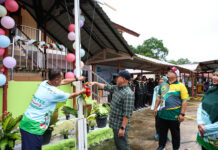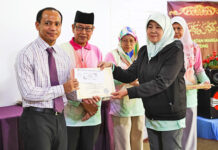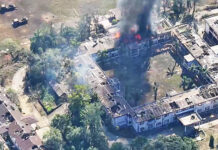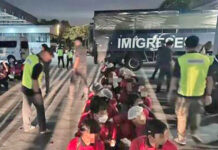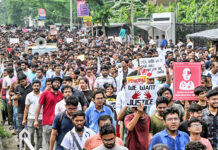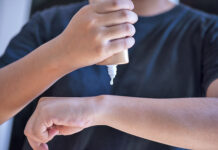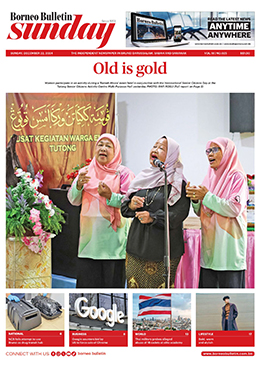IWAKI, JAPAN (AP) – Fish auction prices at a port south of the Fukushima Daiichi nuclear power plant were mixed on Friday amid uncertainty over how seafood consumers will respond to the release of treated and diluted radioactive wastewater into the ocean.
The plant, which was damaged in the 2011 earthquake and tsunami, began sending the treated water into the Pacific on Thursday despite protests at home and in nearby countries that are adding political and diplomatic pressures to the economic worries.
Middleman Hideaki Igari at the Numanouchi fishing port said the price of larger flounder, Fukushima’s signature fish known as Joban-mono, was more than 10 per cent lower at the Friday morning auction, the first since the water release began.
Prices of some average-size flounder rose, but presumably due to a limited catch, said Igari. Others fell.
It was a relatively calm market reaction to the water release. But, Igari said, “we still have to see how it goes next week”.
The decades long release has been strongly opposed by fishing groups and criticised by neighbouring countries.
A citizens’ radiation testing centre said it’s getting inquiries and expects more people might bring in food, water and other samples as radiation data is now a key barometer for what to eat.

Japanese fishing groups fear the release will do more harm to the reputation of seafood from the Fukushima area.
They are still striving to repair the damage to their businesses from the meltdown at the power plant after the earthquake and tsunami.
“We now have this water after all these years of struggle when the fish market price is finally becoming stable,” Igari said after Friday’s auction.
“Fisheries people fear that prices of the fish they catch for their living may crash again, and worry about their future living.”
The Japanese government and the plant’s operator, Tokyo Electric Power Company Holdings (TEPCO), said the water must be released to make way for the facility’s decommissioning and to prevent accidental leaks of insufficiently treated water. Much of tank-held water still contains radioactive materials exceeding releasable levels.
Some wastewater at the plant is recycled as coolant after treatment, and the rest is stored in around 1,000 tanks, which are filled to 98 per cent of their 1.37 million-tonne capacity.
The tanks cover much of the complex and must be cleared out to make room for new facilities needed for the decommissioning process, officials say. Authorities said the wastewater after treatment and dilution is safer than international standards require, and that its environmental impact will be negligible.
On Friday, the first seawater samples collected after the release were significantly below the legally releasable levels, the power company said.
But, having suffered a series of accidental and intended releases of contaminated water from the plant early in the disaster, hard feelings and distrust of the government and TEPCO run deep in Fukushima – especially in the fishing community.
TEPCO said the release will take 30 years, or until the end of the plant decommissioning.
People fear that could mean a tough future for youths in the fishing town, where many businesses are family-run.
Fukushima’s current catch already is only about one-fifth its pre-disaster level due to a decline in the number of fishers and decreased catch sizes.
The government has allocated JPY80 billion, about USD550 million, to support fisheries and seafood processing, and to combat potential reputation damage by sponsoring campaigns to promote Fukushima’s Joban-mono and processed seafood.
TEPCO has promised to deal with reputational damage claims. Head of the Fukushima Prefectural Fisheries Cooperatives Tetsu Nozaki, said in a statement on Thursday that worries of the fishing community will continue for as long as the water is released.
“Our only wish is to continue fishing for generations in our home town, like we used to before the accident,” Nozaki said.
Fish prices largely depend on the sentiment of wholesalers and consumers in the Tokyo region, where large portions of the Fukushima catch goes.
At the Friday auction at the Numanouchi port, the price for flounder was down from its usual level of about JPY3,500 (USD24) per kilogrammes to around JPY3,000 (USD20), said Igari.
“I suspect the result is because of the start of the treated water release from the Fukushima Daiichi and fear about its impact,” he said.
Igari said the discharge is discouraging but hopes careful testing can prove the safety of their fish.
“From the consumers’ point of view about food safety at home, I think the best barometer is data,” he said. – Mari Yamaguchi

